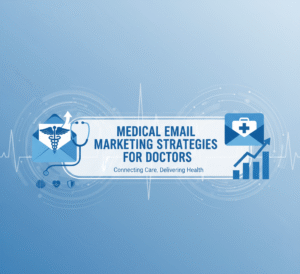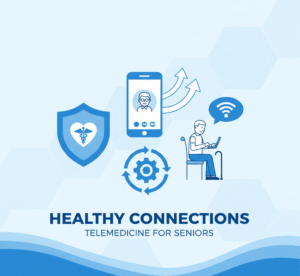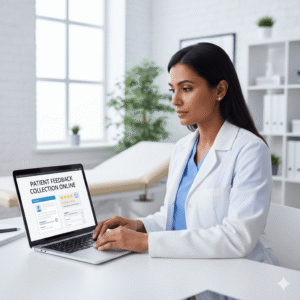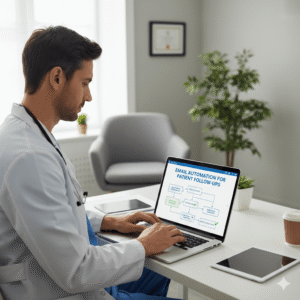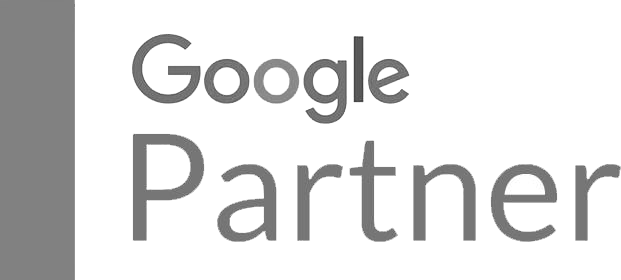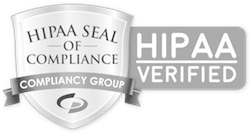“Find lasting relief. Learn how local SEO for chronic pain management clinics helps patients in your area discover specialized care.”
Living with chronic pain can be debilitating. Finding effective treatment often means navigating a complex healthcare landscape. For chronic pain management clinics, standing out and reaching those in need is paramount. This is where robust Local Search Engine Optimization (SEO) becomes a game-changer. Local SEO helps your clinic rank higher in local search results, directly connecting you with patients seeking pain relief “near me.”
This detailed guide explores how chronic pain clinics can master local SEO. It covers essential strategies like precision keyword targeting, building authoritative local citations, cultivating positive patient reviews, and crafting valuable educational blog content. Finally, we will show how specialized SEO services, like those offered by Invigo Media, are crucial for chronic pain clinics to dominate their regional market.
Understanding Local SEO: Why It Matters for Pain Clinics
Local SEO is a specialized approach. It focuses on boosting your online visibility for location-specific searches. Imagine a patient in your city typing “back pain treatment [your city]” or “pain management [your neighborhood]” into Google. Local SEO ensures your clinic appears prominently in those results.
This is critical because many patients start their healthcare journey online. They often seek local solutions. Local SEO helps your clinic appear in:
- Google’s Local Pack: The top three map-based listings are shown directly in search results.
- Google Business Profile (GBP) listings: Formerly Google My Business, this is your clinic’s digital storefront.
- Local directories: Healthgrades, Zocdoc, Yelp, and other healthcare-specific platforms.
- Google Maps and other navigation apps: Guiding patients directly to your door.
Simply put, if your clinic isn’t easily found in local searches, you miss out on many potential patients needing your specialized care.
Strategy 1: Master Your Google Business Profile
Your Google Business Profile is the cornerstone of local SEO for your chronic pain clinic. Think of it as your primary digital advertisement. Optimizing it thoroughly is not optional; it is essential.
Claim and Verify Your Profile: First, claim your Google Business Profile. If you have not done this, it is your immediate priority. Google needs to verify your clinic’s physical location. This process confirms your legitimacy and allows you to manage your listing.
Complete Every Section Meticulously: A fully completed profile signals authority and relevance to Google. It also gives potential patients all the information they need at a glance.
- Business Name, Address, Phone Number (NAP): Ensure this information is consistent across your online presence. Inconsistent NAP data can confuse search engines and hurt your rankings.
- Business Hours: List accurate operational times, including any holiday hours or special closures. Patients rely on this information to plan visits.
- Services Offered: Detail all your pain management services. Include specific treatments, conditions you address (e.g., neuropathic pain, joint pain, back pain), and specialized procedures. Use keywords relevant to these services.
- Photos and Videos: Add high-quality images and videos. Include exterior shots of your clinic, interior photos (waiting areas, treatment rooms), and professional headshots of your pain specialists. Businesses with photos receive more requests for directions. Visuals build trust and help patients visualize their visit.
- Description: Write a compelling, keyword-rich description of your clinic. Highlight your unique selling propositions and what sets you apart.
- Categories: Select “Pain Management Clinic” as your primary category. Add relevant secondary categories like “Physical Therapy Clinic,” “Sports Medicine Clinic,” or “Neurologist” if applicable to your services. Correct categories improve visibility for relevant searches.
Regularly Update and Engage: Google favors active profiles. This shows your clinic is alive and responsive.
- Post Updates: Share news, events, promotions, or health tips directly on your GBP. This can include information about new treatments, patient success stories (with consent), or community involvement.
- Q&A Section: Monitor and answer questions posed by users in the Q&A section. Providing helpful, informative answers can pre-empt common patient queries and demonstrate your expertise.
- Messaging Feature: Enable the messaging feature. This lets potential patients directly message your clinic with questions, fostering immediate engagement.
Pro Tip: Treat your Google Business Profile as a dynamic entity. It requires ongoing attention and updates to maintain its effectiveness.
Strategy 2: Intelligent Keyword Targeting and Content Creation
Keywords bridge a patient’s pain and your clinic’s solution. Effective keyword targeting ensures your content speaks directly to what people are searching for. This is where chronic pain keyword clusters become vital.
Understand Patient Search Intent: Patients searching for pain relief often use language different from that of medical professionals. They are looking for answers to their problems.
- Instead of “lumbar radiculopathy diagnosis,” they search for “why does my back hurt” or “sciatica pain treatment.”
- They might use phrases like “pain management near me’ or “best joint pain clinic [city name].”
Your keyword research must focus on these “pain point SEO” terms. Identify your target audience’s problems and the specific phrases they use to describe their struggles. In search results, tools like Google’s “People Also Ask” section can reveal common questions and phrasing.
Develop a Comprehensive Keyword List: Focus on long-tail keywords beyond broad terms. These specific phrases often contain three or more words and indicate higher intent.
- Examples: “neuropathic pain treatment options in [city],” “non-surgical back pain relief [zip code],” “chronic migraine specialist [county].”
These long-tail keywords attract a smaller but highly motivated audience who are closer to making a decision.
Content is King (and Empathic): Your website’s content, especially your blog, is your primary keyword grabber. Every piece of content should address a specific user search intent and provide immediate, valuable answers.
- Educational Blog Content: Create a robust library of articles that address common chronic pain conditions, treatment options, prevention strategies, and lifestyle management.
- Types of Pain: Explain the differences between acute, chronic, neuropathic, and inflammatory pain. This helps patients understand their experiences.
- Conditions and Symptoms: Detail connections between symptoms and conditions. For example, articles on “Recognizing the Signs of Fibromyalgia” or “Understanding Nerve Damage: Causes, Symptoms, and Treatments.”
- Treatment Options: Describe procedures your clinic offers in detail, like “Nerve Block Procedure: What It Is, Benefits, Risks and Recovery” or “Physical Therapy for Chronic Back Pain.”
- Pain Management Goals: Discuss patient goals beyond pain reduction, like improving sleep, increasing mobility, or returning to work.
- Mental Health Connection: This section addresses how chronic pain impacts mental health, covering links to depression, anxiety, and stress. It also provides resources and discusses integrated care approaches.
- Lifestyle and Self-Care: Offer advice on diet (“Foods to Avoid When Managing Fibromyalgia”), exercise (“Best Stretches for Sciatica Pain Relief”), and sleep (“How to Sleep with Sciatica”).
- Service Area Pages: Create dedicated pages for each local community your clinic serves. These pages should naturally mention the city, neighborhood, and even nearby landmarks. Include testimonials that mention the location to reinforce your local presence.
- Patient Pain Clinic Testimonials: Integrate testimonials directly into relevant service pages. For instance, a patient discussing “back pain treatment SEO” in a specific area reinforces local relevance.
Stylistic Considerations for Content:
- Active Voice: Write in an active voice. It sounds more direct and authoritative. Instead of “Pain is managed by our specialists,” write “Our specialists manage pain effectively.”
- Transactional Words: Use words that encourage action or smoothly transition thoughts. Examples include “therefore,” “consequently,” “however,” “in addition,” “first,” “next,” and “finally.”
- Concise Sentences: Avoid long, rambling sentences. Break them down into shorter, more digestible units. This improves readability for all audiences.
- Avoid AI-like Language: Write naturally. Focus on empathy, real-world examples, and a conversational tone.
- No Forbidden Words: Strictly avoid “holistic,” “elevate,” and “unveil.” Find alternative phrasing that conveys the same meaning without using these specific terms.
Consistency is Key: Post new, fresh content regularly. Monthly is a minimum; bi-weekly or weekly is better for competitive markets. Google rewards sites that consistently provide new, valuable information. Focus on providing answers to actual patient questions rather than just selling services. This builds trust and positions your practice as a leading source of information.
Strategy 3: Building Local Citations and Directory Listings
Local citations mention your clinic’s Name, Address, and Phone Number (NAP) on other websites. These can be in structured directories (like Yelp, Healthgrades) or unstructured mentions (blogs, news articles). They act as “votes of confidence” for your local legitimacy.
NAP Consistency is Non-Negotiable: Ensure your clinic’s NAP information is identical across every online listing. Even minor discrepancies (e.g., “St.” vs. “Street,” or different phone number formats) can confuse search engines and harm your rankings. Double-check everything.
High-Value Directories: Prioritize listing your clinic in:
- Healthcare-Specific Directories: Zocdoc, Healthgrades, Vitals, PainHero, RateMDs. These are highly relevant and trusted sources for healthcare searches.
- General Business Directories: Yelp, Yellow Pages, Superpages, local Chamber of Commerce websites.
- Local Niche Sites: Look for local health blogs, community event listings, or professional associations that feature local businesses in your area.
Beyond Directories: Local Backlinks: A backlink is when another website links to yours. High-quality local backlinks significantly boost your website’s authority and search engine ranking.
- Partnerships: Collaborate with nearby businesses (e.g., local gyms, pharmacies, physical therapy centers) for cross-promotions. They might link to your site from their “partners” or “resources” page.
- Community Involvement: Sponsor local events, volunteer, or participate in health fairs. Ask for a mention and a link on the event’s website or the organizing body’s page.
- Local News and Media: If your clinic has a unique story, offers a new treatment, or hosts an event, contact local news outlets. A feature story with a link can be compelling.
- Guest Blogging: Offer to write an article for a local health blog or a community website, including a link to your clinic’s site.
Focus on the quality of backlinks over quantity. One link from a reputable local news site is far more valuable than ten from low-quality, irrelevant directories. These strategies help build a strong local backlink profile, a major ranking factor.
Strategy 4: Cultivating Positive Patient Reviews
Patient reviews are critical. They influence both new patients and your search rankings. A high volume of positive, recent reviews signals trust and quality to potential patients and search engines.
Make it Easy to Review:
- Ask Directly: Encourage satisfied patients to leave reviews in your clinic or immediately after their appointment.
- Follow-Up: Send automated follow-up emails or texts with a direct link to your Google Business Profile review page, or other preferred review platforms (e.g., Healthgrades).
- QR Codes: Display QR codes in your waiting room or on appointment cards that link directly to your review pages.
Respond to All Reviews: This demonstrates professionalism and empathy.
- Positive Reviews: Thank patients for their feedback. Acknowledge their specific positive experience if possible.
- Negative Reviews: Respond promptly, professionally, and empathetically. Address the concerns without getting defensive. Offer to resolve issues offline. A well-handled negative review can improve your clinic’s image, showing you care about patient experience.
Showcase Testimonials: Feature compelling testimonials on your website. Use snippets from patient pain clinic testimonials that highlight successful treatments and positive patient experiences, and perhaps even mention your clinic’s location (e.g., “I found the best pain specialist right here in [City]!”). This can reinforce your local expertise and build social proof.
Pro Tip: Automate your review request process. Systems that send requests only to patients with positive experiences can help generate a high volume of 5-star ratings, boosting your pain specialist map pack presence.
Strategy 5: Optimizing for User Experience (UX) and Technical SEO
Beyond content and listings, your website must be a smooth, efficient experience for users and search engines.
Mobile-Friendliness: Most patients search for healthcare providers on their smartphones. Your website must be fully responsive and easy to navigate on any mobile device. Google penalizes sites that are not mobile-friendly.
Site Speed: Patients expect quick loading times. A slow website frustrates users and increases bounce rates. Google considers site speed a crucial ranking factor. Optimize images, leverage browser caching, and choose a fast hosting provider to improve loading times.
Precise Navigation and Information Access: Your website should display information about your services, location, team, and contact details. Patients appreciate sites that are easy to use and provide helpful information quickly. Ensure your phone number is clickable on mobile devices.
Schema Markup: Implement schema markup (structured data) on your website. This helps search engines understand your content, such as your clinic’s address, hours, services, and patient reviews. It can also lead to rich snippets in search results, making your listing stand out.
Connecting with Patients: Geo-Targeted Pain Services and Neuropathic Pain SEO Terms
You must consider how specific conditions are searched locally to dominate local search. This means focusing on geo-targeted pain services and specialized neuropathic pain SEO terms.
Geo-Targeting Specific Services: Beyond general pain management, think about how patients search for specific treatments in their area.
- “back pain treatment [city name]”
- “knee pain relief [neighborhood]”
- “neuropathic pain specialist [county]”
- “Joint pain clinic SEO” can be leveraged by creating content specifically around joint pain treatments available locally.
Create dedicated landing pages or blog posts that combine specific conditions or treatments with local identifiers. For example, an article “Expert Neuropathic Pain Treatment in [Your City]” would target precise searches.
Local Pain Therapy Content: Your blog should not just be about conditions but also address local nuances or specific therapies. This could include:
- Articles about new pain therapy techniques are available at your clinic.
- Posts discussing local health initiatives related to pain management.
- Interviews with your local pain specialists.
Invigo Media: Your Partner in Local SEO Dominance
Implementing a comprehensive local SEO strategy requires consistent effort, specialized knowledge, and ongoing adaptation to search engine algorithm changes. Balancing patient care with complex digital marketing can overwhelm chronic pain management clinics. This is where Invigo Media’s SEO services become essential.
Invigo Media understands the unique challenges and opportunities within the healthcare marketing landscape, particularly for pain management clinics. They offer specialized expertise to position your clinic as a leader in your region.
How Invigo Media Can Help:
- In-depth Keyword Research: They conduct thorough keyword research, identifying high-value chronic pain keyword clusters and long-tail terms relevant to your clinic and services. This ensures your content aligns with what local patients are actively seeking.
- Google Business Profile Optimization and Management: Invigo Media ensures your GBP is fully optimized, constantly updated, and actively managed. This includes accurate NAP details, compelling descriptions, regular posting, and proactive engagement with Q&A sections and reviews. They understand the nuances that get your pain specialist map pack listing to the top.
- Strategic Local Citation Building: They meticulously build and manage your clinic’s local citations across relevant healthcare directories and general business listings, ensuring NAP consistency and maximizing your local authority.
- Reputation Management and Review Generation: Invigo Media implements strategies to encourage positive patient reviews and manages responses, helping to build a strong online reputation. They recognize that patient pain clinic testimonials are powerful social proof.
- Expert Content Creation: They develop high-quality, informative, engaging educational blog content tailored to your target audience. This includes articles on common pain conditions, treatment options, and answers to frequently asked questions, all optimized with neuropathic pain SEO terms and other relevant keywords. Their medical copywriting ensures content is concise, rich with detail, and avoids AI-like phrasing.
- Technical SEO Excellence: From optimizing site speed and mobile responsiveness to implementing schema markup, Invigo Media handles the technical aspects of SEO, ensuring search engines easily crawl and understand your website.
- Comprehensive Analytics and Reporting: They provide transparent reports on your SEO performance, tracking key metrics like organic traffic, conversions, and local rankings. This data-driven approach allows for continuous refinement of your strategy.
- Beyond SEO: Invigo Media offers integrated digital marketing services, including PPC advertising, social media marketing, mobile marketing, and medical website design. This holistic approach ensures all your digital efforts work together to attract new patients. They serve various healthcare industries, including pain management, and demonstrate their specialized experience.
By partnering with an experienced SEO agency like Invigo Media, chronic pain clinics can effectively offload the complexities of digital marketing. This lets your team focus on what you do best: exceptional patient care. With their expertise, your clinic can attract more patients, build credibility, and stand out in your regional market.
Conclusion
In today’s digital age, local SEO is not merely a marketing tactic but a fundamental requirement for chronic pain management clinics aiming to thrive. Your clinic can significantly improve its local search rankings by diligently optimizing your Google Business Profile, strategically targeting keywords, building a robust network of local citations, fostering positive patient reviews, and consistently publishing valuable educational content.
Attracting patients searching for relief from chronic pain requires precision and persistence. Implementing these strategies will increase your online visibility and establish your clinic as a trusted and authoritative source of pain relief in your community. For clinics ready to differentiate themselves and ensure their vital services reach those who need them most, investing in expert SEO services, such as those provided by Invigo Media, is the smartest move forward. Make your clinic the first choice for local pain sufferers.
Frequently Asked Questions (FAQs)
Q1: How long does it take to see results from local SEO for a pain clinic?
A: You can expect noticeable improvements in your local rankings within 3 to 6 months. Smaller wins, such as more phone calls or website visits, might occur within a few weeks. Local SEO is a long-term strategy requiring consistent effort for sustainable growth.
Q2: Is local SEO expensive for chronic pain clinics?
A: Many foundational local SEO tactics, such as claiming and optimizing your Google Business Profile, are free. However, investing in professional SEO services or specialized tools can significantly speed up results and improve overall effectiveness. The return on investment (ROI) from increased patient acquisition often outweighs the costs.
Q3: What is the most critical factor for local SEO ranking for a pain management clinic?
A: Your Google Business Profile is arguably the most critical element. A complete, accurate, and actively managed GBP, combined with a high volume of positive patient reviews, significantly impacts your local search and map pack rankings. Consistency of your Name, Address, and Phone number (NAP) across the web is also paramount.
Q4: How often should a pain clinic update its Google Business Profile?
A: You should update your Google Business Profile regularly. This includes posting new updates or promotions weekly, responding to reviews promptly, and ensuring your business hours and service information are always accurate. An active profile signals relevance to Google and potential patients.
Q5: What kind of content should a chronic pain clinic include on its blog for SEO?
A: Focus on educational content that addresses patient pain points and search queries. This includes articles explaining different types of pain, specific conditions (e.g., back pain, neuropathic pain, joint pain), treatment options, self-care tips, and the link between chronic pain and mental health. Use a common language that patients would use, not just medical jargon.
Q6: Do patient testimonials help with SEO?
A: Yes. Patient testimonials and reviews are a major ranking factor for local SEO. They build trust and credibility with potential patients and signal to search engines that your clinic is reputable. Encourage satisfied patients to leave detailed reviews about specific treatments or positive experiences.
Q7: What are local citations, and why are they essential for pain clinics?
A: Local citations mention your clinic’s name, address, and phone number (NAP) on other websites, such as online directories (Yelp, Healthgrades) or local business listings. They help search engines verify your clinic’s physical location and legitimacy, increasing local search rankings. Consistency of your NAP information across all citations is crucial.
Q8: Can social media impact local SEO for a pain management clinic?
A: While social media does not directly impact SEO rankings, it indirectly helps. Active social media profiles increase brand awareness and engagement, drive traffic to your website, and can generate positive mentions or shares of your content. This broader online presence supports your overall SEO efforts.
Q9: What if my clinic receives a negative review? How should I handle it for SEO?
A: Respond to negative reviews promptly and professionally. Acknowledge the patient’s concerns, apologize for any negative experience, and offer to resolve the issue offline. Your empathetic and professional response can turn a negative experience into a positive impression for other potential patients who see your response. Do not get into arguments or disclose patient health information.
Q10: Why should a pain management clinic consider professional SEO services like Invigo Media?
A: Professional SEO services offer specialized expertise, saving your clinic time and resources. Agencies like Invigo Media have the tools and knowledge to conduct in-depth keyword research, manage complex GBP optimizations, build strategic citations, and create high-quality, SEO-optimized content. They can develop a comprehensive, tailored strategy to ensure your clinic stands out in a competitive market and consistently attracts new patients, allowing your team to focus on patient care.



